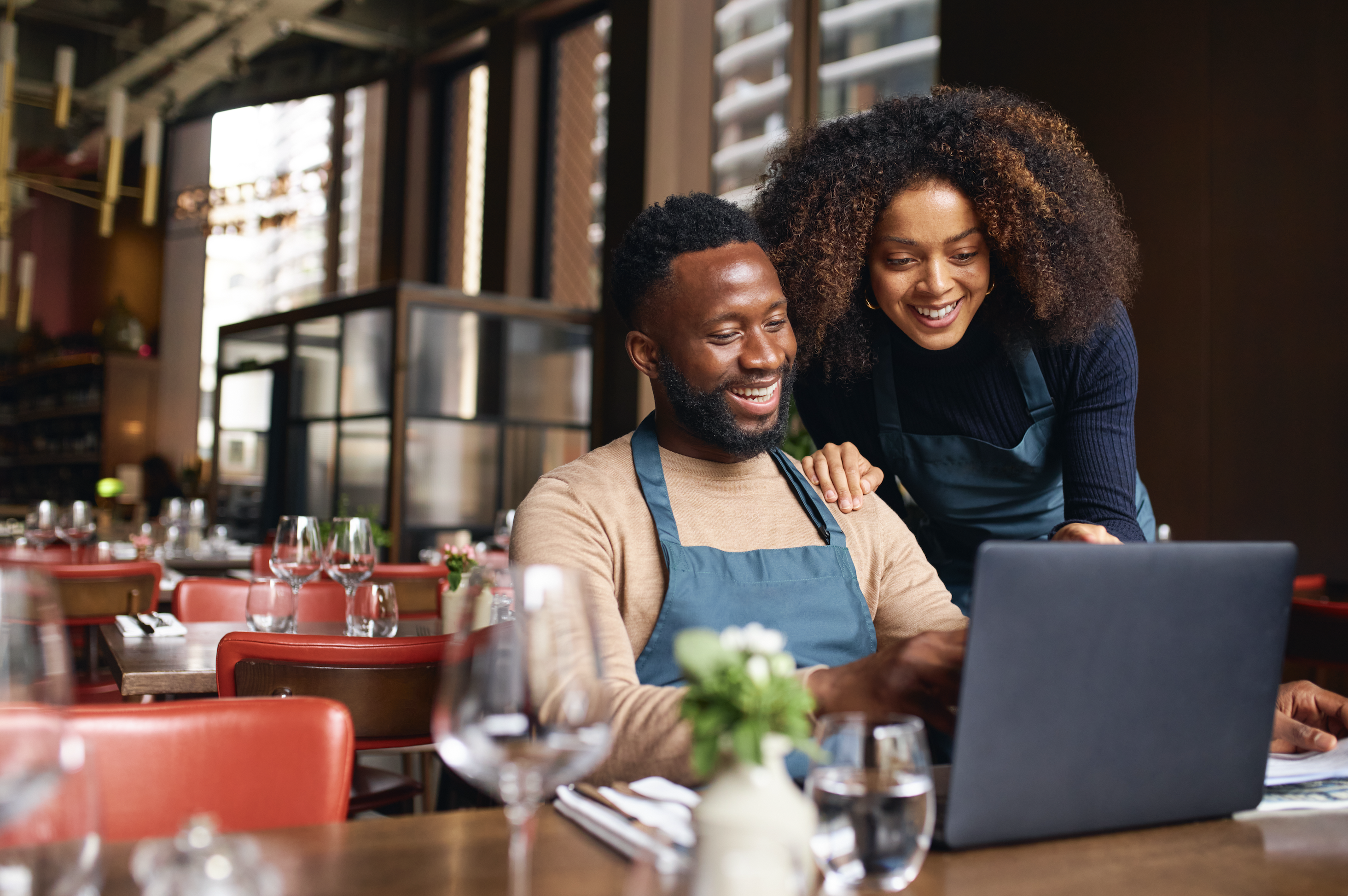Marketing Ideas for Restaurants That Fill Seats
Today, social media isn’t just for sharing personal photos of your dog, your kids, or your coffee. It’s also a powerful marketing channel for restaurants looking to draw in new customers, showcase their offerings, and strengthen their brand identity.
And the statistics back this up: nearly half of diners have tried a restaurant after seeing it on social media, while an equal amount openly say that social media can influence their restaurant choices.
When it comes to digital marketing ideas for restaurants, popular social media platforms like Instagram, Facebook, and TikTok are excellent places to start.
But how exactly do restaurants use the power of social media to boost visibility? The good news is there are many ways, including creating engaging food and brand-related content, using hashtags, and running promotions.
With that in mind, here’s how to market a restaurant on social media and other digital marketing ideas restaurateurs like you should consider.
Utilize user-generated content
User-generated content (UGC) refers to content (like a TikTok video or Instagram post) that’s been created by a customer, rather than the business it’s promoting. Specifically, UGC might include photos, videos, or written reviews that customers share of their experience.
When it comes to digital marketing for restaurants, leveraging UGC is a powerful strategy. Why?
Not only is UGC essentially free marketing material, but it also helps build trust with consumers. That’s because more than 80% of buyers trust recommendations from their peers over all types of advertising.
While your customers might create UGC on their own, you can also encourage them to create and share content about their experiences with incentives. For example, you can offer a free appetizer or drink in exchange for a review or social media share.
Curious about what UGC might look like? Creators can share roundups of the top restaurants in their city or create viral videos about your menu.
Engage with influencers and bloggers
There are different “tiers” of social media and UGC creators. While positive content can be useful, some of the most valuable content comes from professional influencers and bloggers. When creators like these share your restaurant with their large audience base, it can generate significant exposure.
Think about it: many influencers and bloggers have audiences in the hundreds of thousands (and sometimes, even more).
Identify relevant creators in your area to work effectively with influencers and bloggers as a restaurant. You can search social media platforms, research creators who have partnered with other restaurants in your area, and click relevant hashtags.
Next, develop a mutually beneficial partnership. What experience can you offer bloggers and creators to make it worth their while to visit your restaurant and share their experiences?
Some examples of successful influencer marketing campaigns involving restaurants include this campaign with Outback Steakhouse, this video of a cocktail bar in Sydney, and this review of a restaurant in Brooklyn.
Optimize your restaurant’s online presence
When brainstorming marketing ideas for restaurants, be sure to approach your restaurant’s online presence holistically and consider comprehensive restaurant advertising strategies.
For example, while your social media channels matter, your restaurant’s website and online ordering system (if relevant) are equally important to the customer experience. Your website should be aligned with your brand, user-friendly, and frictionless so that customers can seamlessly visit your page, get the information they want, and complete online orders.
Your website should also be optimized for search engines so customers can easily find it. To do this, include relevant keywords in your website copy based on factors like your restaurant’s name, location, and menu offerings. Additionally, be sure your website is mobile-friendly, loads quickly, and has a clear link structure to promote ease of use.
Other tips to keep in mind?
List your restaurant on Google My Business, a free tool that Google says “allows you to take charge of the way your business appears on Google Search and Maps.” It’s essentially a business profile where you can “connect with customers, post updates, list your products and services, accept online orders, and more.”
You can also list your business on various review sites (such as Yelp, Tripadvisor, and OpenTable) so customers can share reviews with different audiences.
Enhance your local SEO
There are different types of search engine optimization (SEO). For restaurants, it’s important to understand local SEO, which refers to increasing your restaurant’s visibility to customers searching in your particular geographic area.
To enhance your local SEO, target keywords with local intent, such as “best pizza in New York City” or “Indian restaurants near me.” Also, make sure your brand’s name, address, and phone number (or NAP) are listed and consistent across all platforms, directories, and websites. This way, customers can easily contact and visit your restaurant.
Once you have a solid online presence, you can enhance your reputation by monitoring online reviews, responding to them, and sharing exceptional ones. When you respond to reviews (both positive and otherwise), your customers see that your restaurant is active and engaged and that their voices are being heard.
Implement email marketing campaigns
Email campaigns are another tried-and-true marketing method that can work wonders for restaurants. In fact, data shows that email marketing has a high return on investment, and three-quarters of marketers are seeing an increase in email engagement.
You first need a customer email list to properly deploy email marketing campaigns. You can create one by encouraging customers to sign up for emails in person, on your website, or through social media. You can even incentivize sign-ups by offering email subscribers exclusive discounts or one-time deals.
Next, you’ll want to create effective email marketing campaigns. These should include:
- Compelling subject lines
- Visually appealing layouts
- Useful information (such as your holiday business hours, new menu items, or special promotions)
Another exceptional tool you can use is interactive PDFs. Instead of relying on static images, interactive PDFs allow you to showcase an immersive digital menu that can feature detailed dish descriptions, clickable ingredients, and even short recipe videos.
Host special events and promotions
What are other marketing ideas for small businesses and restaurants you can leverage to fill seats?
Consider hosting special events such as themed nights, live music nights, or holiday events and promoting them through your marketing channels. For example, you could share snippets of last week’s open mic night on your Instagram story or send a recent TikTok video to your email list to highlight your Wednesday two-for-one cocktails.
If you’re looking for slightly less time-intensive restaurant promotion ideas, consider developing a loyalty program for regular customers. This can further incentivize loyalty and strengthen your restaurant’s reputation.
Collaborate with local businesses
In addition to the restaurant marketing tips above, consider collaborating with other local businesses. For example, you could:
- Partner with a local brewery to have a guest beer on tap
- Ask local craftspeople to share their wares
- Host events with local musicians
Events like these offer opportunities for cross-promotion and can generate organic community involvement while supporting your business.
Let FLIPpages fuel your restaurant’s marketing strategy
If you’re ready to elevate your restaurant’s publications, FLIPpages is here to help. FLIPpages is a digital publishing platform that lets you turn static PDFs into interactive publications and compelling digital menus that can entice diners and drive sales.
Sign up for your free trial to see how easy it is to get started.






